 I never really thought much about character point of view (POV) until I decided to write fiction. In my non-fiction writing, I normally write in second person because I’m often giving instructions on what “you” can do to solve a problem. But fiction writers almost never use second person.
I never really thought much about character point of view (POV) until I decided to write fiction. In my non-fiction writing, I normally write in second person because I’m often giving instructions on what “you” can do to solve a problem. But fiction writers almost never use second person.
A Fantasy Detective Novel?
When I started writing Vaetra Unveiled, I chose to write in first person because I wanted the reader to step into the shoes of the lead character and experience what “I” was experiencing. I consider Jim Butcher to be one of my influences, and he uses first person in his Dresden Files series.
However, the Dresden Files is urban fantasy, while I was writing a Swords and Sorcery adventure. Most epic, historical, and adventure fantasy writers use third person. I argued with myself about that, but decided that Jaylan, my main character, actually is a private detective of sorts, as is Harry Dresden.
After my brother read the first few chapters of my book, I asked him what he thought. He was hesitant in his reply, and made a comment about it reading like a “gumshoe novel,” and he wasn’t sure he liked that. I had mixed feelings about his reaction. On the one hand, he had nailed the exact experience I was seeking for the reader, but on the other hand, he is a major S&S fantasy fan and other readers might share his reservations about the intimacy of the first-person viewpoint.
The Official Word
I started researching the craft of fiction writing about the same time I got started writing fiction. In fairly short order, I learned that first person is not recommended for first-time novelists. Well, darn.
I also discovered a major flaw with the first-person POV; you can’t show anything that happens when the main character is not present. That became a real problem because I wanted to follow the separate travels of Sulana, a second character who was nearly as important to the story as Jaylan. The plot depended upon the two characters being thrown together, going their separate ways, and then converging again.
Head-hopping from Jaylan to Sulana in first person seemed like an exceptionally bad idea. For one thing, I didn’t feel confident that I could take on a female first-person perspective. For another, the opportunity for reader confusion seemed high. One should never confuse the reader.
Would I have to abandon first person and rewrite the work I’d done so far?
I was rescued just in time by the knowledgeable editor Victoria Mixon. She posted a POV article on her blog, and I voiced my conundrum in the comments. Her suggestion was to write Jaylan in first person and Sulana in third. You can do that?
The Mixed Viewpoint Solution
I decided to try Victoria’s suggestion and was thrilled with the results. All of the scenes that include Jaylan are in first person from his point of view, even if Sulana is present. All of the scenes with Sulana (where Jaylan is not present) are in third person and from her point of view (third person limited.)
I worked with my beta readers to smooth out the transitions, and I was careful to follow a few rules to minimize confusion:
- Never change POV within a chapter, much less within a scene. Every POV shift happens on a chapter break.
- When a POV shift does happen, make it clear whose head you’re in within the first paragraph or two of the new chapter.
- Limit POV shifts to just Jaylan and Sulana.
Did It Work?
For the most part, I think the first/third POV approach worked. In fact, the second book uses the same approach, although I’m expanding the POV shifts to include one more head (that of the villain.)
Based on the reviews I’ve received, most people don’t notice the POV, which is as it should be. The people who do notice it (mostly other writers) express reservations, but conclude that it works okay for this story. That’s good enough for me.
You can decide for yourself. As it turns out, the excerpt for Vaetra Unveiled at Amazon.com includes the first three chapters of the book. The first two chapters are in Jaylan’s point of view, and the third chapter is in Sulana’s. Check it out and tell me what you think.
*****
Do you usually notice the point of view when you read for pleasure? If so, do you have a preference? Does that preference depend upon the genre? Tell me in the comments!
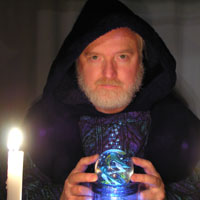
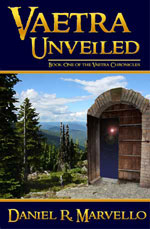
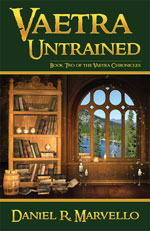
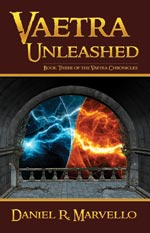
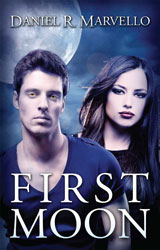
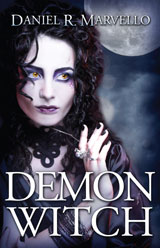
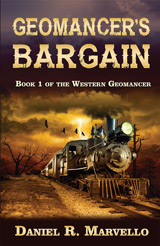
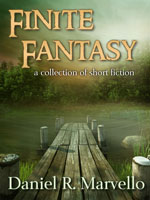
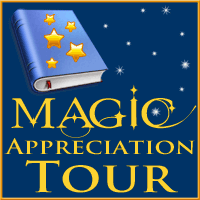

I only notice pov if it’s not working. I’ve read a few novels with mixed povs and I’m fine with it, as you’ve found it’s a good way to separate characters.
Thanks for commenting, Sarah. I’m with you. The POV can be whatever the author wants, as long as it works.
I’ve read that POV has become more intimate in modern fiction writing because of the visual arts. Readers expect to have an engaging, emotional experience (like they would get with a movie) and third person omniscient often puts the reader at too much of a distance from the story for that.
I admit the change in POV caught me a little off guard at first. I thought maybe you had just forgotten which POV you had started with. But then I realized it was planned and I had no problem with it after that.
Good to know. Thanks for telling me that, Ken, and thanks for reading my book! I think the first shift is the hardest on readers. After that, they know what to expect, just as you did.
I’m considering adding an indicator of POV (just the character’s name in italics or something) at the beginning of the chapters on the second book. I’ve seen that done before, but I can’t decide if it’s hokey.
On the one hand, adding an indicator might help readers anticipate the change, but on the other hand, it might seem like I’m not confident about doing the POV shift correctly if I add an indicator. I’ll have to run it past my beta readers.
You shouldn’t need an indicator. Just develop a notably different voice for each POV (besides the obvious use of "she" instead of "I"), especially now that you’re adding the villain’s point of view. Make sure the reader can figure out who’s POV you’re in at the start of each chapter without actually having to tell us directly.
Thanks, Ken. That was my inclination and basically what I did for the first book. I’m concerned that an indicator, however subtle, would pull the reader out of the story.
I thought you handled it quite well for a first-time novelist. I’ve seen the method you used in practice elsewhere, and you did an admirable job keeping other viewpoints from leaking in, which a lot of writers struggle with.
I’ve always found 1st person best suited to a story which requires a more limited viewpoint, where the reader should know nothing more than the character does. As you note, Jim Butcher does this expertly, and it’s a great way to build suspense and keep your reader guessing along with the character.
In practice, I always had a bit more trouble with it conceptually – is the character telling the story from a future vantage point? If so, there’s little danger, because you know he survives. Is he somehow relating this story as it’s happening?
This is one of the reasons I decided to flirt with it in a novelette rather than committing to a full novel (which I did, in Sorcerer’s Code). I’ve got an urban fantasy project in my brain that I’ve been wanting to write for years, and that one’s going to have to be in 1st. I was impressed when I read "Vaetra" that you had decided to commit to it for (most of) a full-length fantasy work.
My preference definitely is defined by genre, but also by the type of story. In the case of your work, Daniel, Jaylan’s POV of discovery and self-realization lends itself well to 1st, and Sulana’s more knowledgeable point of view works better in 3rd.
Thanks for the vote of confidence, Chris, and the kind comments. I actually had more difficulty preventing other viewpoints from "leaking in" when I wrote the sections in third person. First is *so* intimate that you are constantly aware of whose head you are in. Everything is happening to "me."
When I wrote the parts with Sulana, I had to keep reminding myself that I could only describe what she could see and what she felt, even though I was talking about her in third person. The challenge was NOT switching heads and NOT slipping into 3rd omniscient.
I know what you mean about "future vantage point," but as a reader, I never had a problem accepting that things were happening as I read them, even though they were described in past tense. I think of it like reading a journal, where the record unfolds as you read forward, and you never know when you’ll reach the last page.
I haven’t gotten to Sorcerer’s Code yet, and I look forward to it. I read The Corpse King and have no question in my mind that I want to read more of your work.
I dislike novels and stories that mix first person with third to expound upon a second character. I immediately put them down. But I guess if it works for some people…more power to them. Just don’t expect me to read it.
I personally prefer the third person limited POV for my fantasy works. It’s also like my natural style, so that may have something to do with it 😉 Though if the first person is unobtrusive enough, that works as well.
I haven’t had the chance to start on your novel this weekend, as I’ve been very busy, but I’m interested to see how you handled the transitions. The idea of mixing 1st and 3rd POV never even occurred to me so I’m very interested to see how you handled it.
Hi Vanna. I’ve been informed by others that what I’m doing is not that unusual after all. Robin Hobb and Piers Anthony are a couple of well-known names that have done so.
The funny thing is that I read Robin Hobb’s "Assassin’s Apprentice," and didn’t remember that she had written it in first person. As you say, if the POV doesn’t stand out, it must work.